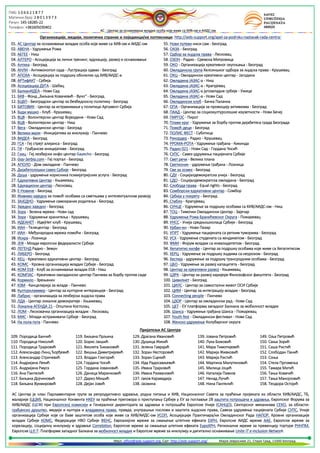Cybersecurity Investment: 63.5% Of Manufacturers Prioritize Strengthening Posture

Table of Contents
The Growing Threat Landscape for Manufacturers
Manufacturers are increasingly targeted by sophisticated cyberattacks designed to disrupt operations, steal valuable data, and extort money. The threat landscape is constantly evolving, with attackers employing increasingly innovative techniques. These threats include:
- Ransomware: Malware that encrypts data and demands a ransom for its release. The NotPetya ransomware attack in 2017, for example, caused billions of dollars in damages globally, severely impacting numerous manufacturing companies.
- Phishing Attacks: Deceptive emails or messages designed to trick employees into revealing sensitive information or downloading malware. These attacks often exploit human error and lack of security awareness.
- Supply Chain Attacks: Compromising a manufacturer's suppliers or partners to gain access to their systems. This can lead to widespread disruption and data breaches affecting multiple organizations.
- IoT Vulnerabilities: The increasing reliance on Internet of Things (IoT) devices in manufacturing creates numerous potential entry points for attackers. Poorly secured devices can easily be compromised, providing access to sensitive industrial control systems (ICS).
- Data Breaches: Unauthorized access to sensitive customer data, intellectual property, and trade secrets. The consequences can include hefty fines, reputational damage, and loss of customer trust.
The frequency and sophistication of these attacks are increasing, making proactive cybersecurity investment more critical than ever.
Key Areas of Cybersecurity Investment for Manufacturers
Manufacturers are investing in several key areas to enhance their cybersecurity posture:
Network Security
This involves implementing robust measures to protect the manufacturing network infrastructure. Key investments include:
- Firewalls: Controlling network traffic and blocking malicious access attempts.
- Intrusion Detection/Prevention Systems (IDS/IPS): Monitoring network traffic for suspicious activity and automatically blocking or alerting on threats.
- Network Segmentation: Dividing the network into smaller, isolated segments to limit the impact of a breach.
Endpoint Security
Securing individual devices (computers, laptops, servers, IoT devices) is paramount. This requires:
- Antivirus Software: Detecting and removing malware.
- Endpoint Detection and Response (EDR): Monitoring endpoint activity for malicious behavior and providing advanced threat detection capabilities.
- Secure Remote Access Solutions: Enabling secure access to the network for remote employees, contractors, and partners.
Data Security
Protecting sensitive data is crucial. Essential measures include:
- Data Encryption: Protecting data at rest and in transit using encryption technologies.
- Data Loss Prevention (DLP): Preventing sensitive data from leaving the network without authorization.
- Access Control Measures: Restricting access to data based on user roles and responsibilities.
Cloud Security
Many manufacturers are migrating to the cloud. Securing cloud environments requires:
- Secure Cloud Migration Strategies: Ensuring a secure transition of data and applications to the cloud.
- Cloud Access Security Brokers (CASB): Enhancing security for cloud applications and data.
Employee Training and Awareness
Human error is a major factor in many cyberattacks. Regular security awareness training programs, including phishing simulations, are essential to educate employees about cybersecurity threats and best practices.
The ROI of Cybersecurity Investment in Manufacturing
Proactive cybersecurity investment offers significant financial benefits:
- Reduced Risk of Costly Data Breaches and Downtime: A robust cybersecurity strategy minimizes the likelihood and impact of data breaches and operational disruptions, saving substantial costs in the long run.
- Improved Operational Efficiency: Enhanced security measures streamline operations and reduce the time spent responding to security incidents.
- Increased Customer Trust and Brand Reputation: Demonstrating a strong commitment to cybersecurity builds customer confidence and enhances brand reputation.
- Compliance with Industry Regulations: Meeting regulatory requirements such as the NIST Cybersecurity Framework avoids potential penalties and legal repercussions.
By mitigating risks and improving operational efficiency, robust cybersecurity investment ultimately leads to significant cost savings.
Choosing the Right Cybersecurity Solutions for Your Manufacturing Business
Developing a tailored cybersecurity strategy is crucial. Consider these factors when choosing solutions:
- Budget Constraints: Balancing security needs with available budget.
- Specific Security Needs of the Manufacturing Environment: Addressing the unique vulnerabilities of the manufacturing process and infrastructure.
- Integration with Existing Systems: Ensuring seamless integration with existing IT systems to avoid disruptions.
- Scalability for Future Growth: Choosing solutions that can adapt to changing needs as the business expands.
A thorough cybersecurity assessment conducted by professionals, coupled with managed security services (MSS), is essential to identify vulnerabilities and develop a comprehensive strategy.
Conclusion: Prioritize Cybersecurity Investment for a Secure Future
This article has highlighted the critical need for proactive cybersecurity investment in the manufacturing sector. The statistic that 63.5% of manufacturers are prioritizing security underscores the growing awareness of the risks. Manufacturers must assess their current cybersecurity posture, identify weaknesses, and invest in robust solutions to protect their operations, data, and reputation. Don't wait for a cyberattack to strike. Invest in robust cybersecurity solutions today to protect your business and ensure a secure future. Contact a cybersecurity expert to learn more about building a comprehensive manufacturing cybersecurity strategy.

Featured Posts
-
 Targetiranje Roma Uni A Roma Srbi E Osu U E Iz Ave Marinike Tepi
May 13, 2025
Targetiranje Roma Uni A Roma Srbi E Osu U E Iz Ave Marinike Tepi
May 13, 2025 -
 Napadi Na Rome Uni A Roma Srbi E Trazhi Zashtitu Od Marinike Tepi
May 13, 2025
Napadi Na Rome Uni A Roma Srbi E Trazhi Zashtitu Od Marinike Tepi
May 13, 2025 -
 Post Brexit Economic Hardship Grips Spanish Border Towns
May 13, 2025
Post Brexit Economic Hardship Grips Spanish Border Towns
May 13, 2025 -
 Sabalenka Triumphant Madrid Open Victory Over Gauff
May 13, 2025
Sabalenka Triumphant Madrid Open Victory Over Gauff
May 13, 2025 -
 Ovechkin Ties Gretzkys Nhl Goal Record 894 Goals And Counting
May 13, 2025
Ovechkin Ties Gretzkys Nhl Goal Record 894 Goals And Counting
May 13, 2025
Latest Posts
-
 Cremaschis Goal Propels Inter Miami To Victory Over Crew
May 13, 2025
Cremaschis Goal Propels Inter Miami To Victory Over Crew
May 13, 2025 -
 B2 B Payments Innovator Pliant Raises 40 Million In Series B Financing
May 13, 2025
B2 B Payments Innovator Pliant Raises 40 Million In Series B Financing
May 13, 2025 -
 Pliant Secures 40 M In Series B Funding To Revolutionize B2 B Payments
May 13, 2025
Pliant Secures 40 M In Series B Funding To Revolutionize B2 B Payments
May 13, 2025 -
 The Historic Kanika House Birthplace Of The Indian Constitution Partial
May 13, 2025
The Historic Kanika House Birthplace Of The Indian Constitution Partial
May 13, 2025 -
 B R Ambedkars Contribution To The Constitution At Kanika House
May 13, 2025
B R Ambedkars Contribution To The Constitution At Kanika House
May 13, 2025
